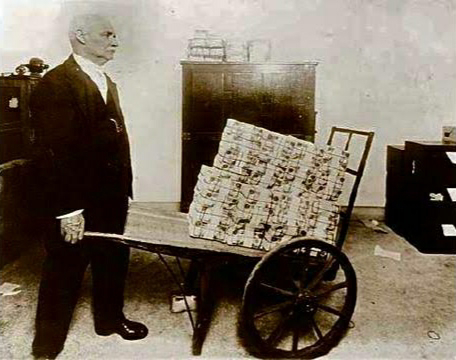Germans carried cartloads of currency notes to buy a loaf of bread after First World War, why? Hyperinflation!
Germany had fought the First World war largely on loans and had to pay war reparations in gold. This depleted gold reserves at a time resources were scarce. In 1923 Germany refused to pay, and the French occupied its leading industrial area, Ruhr, to claim their coal. Germany retaliated with passive resistance and printed paper currency recklessly. With too much printed money in circulation, the value of the German mark fell. In April the US dollar was equal to 24,000 marks, in July 353,000 marks, in August 4,621,000 marks and at 98,860,000 marks by December, the figure had run into trillions.
As the value of the mark collapsed, prices of goods soared. The image of Germans carrying cartloads of currency notes to buy a loaf of bread was widely publicised evoking worldwide sympathy. This crisis came to be known as hyperinflation, a situation when prices rise phenomenally high.
Eventually, the Americans intervened and bailed Germany out of the crisis by introducing the Dawes Plan, which reworked the terms of reparation to ease the financial burden on Germans.



Comments
Post a Comment